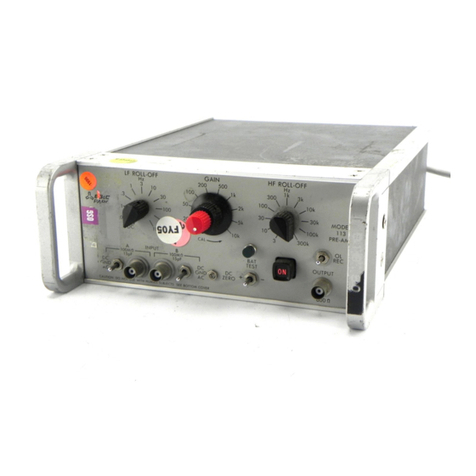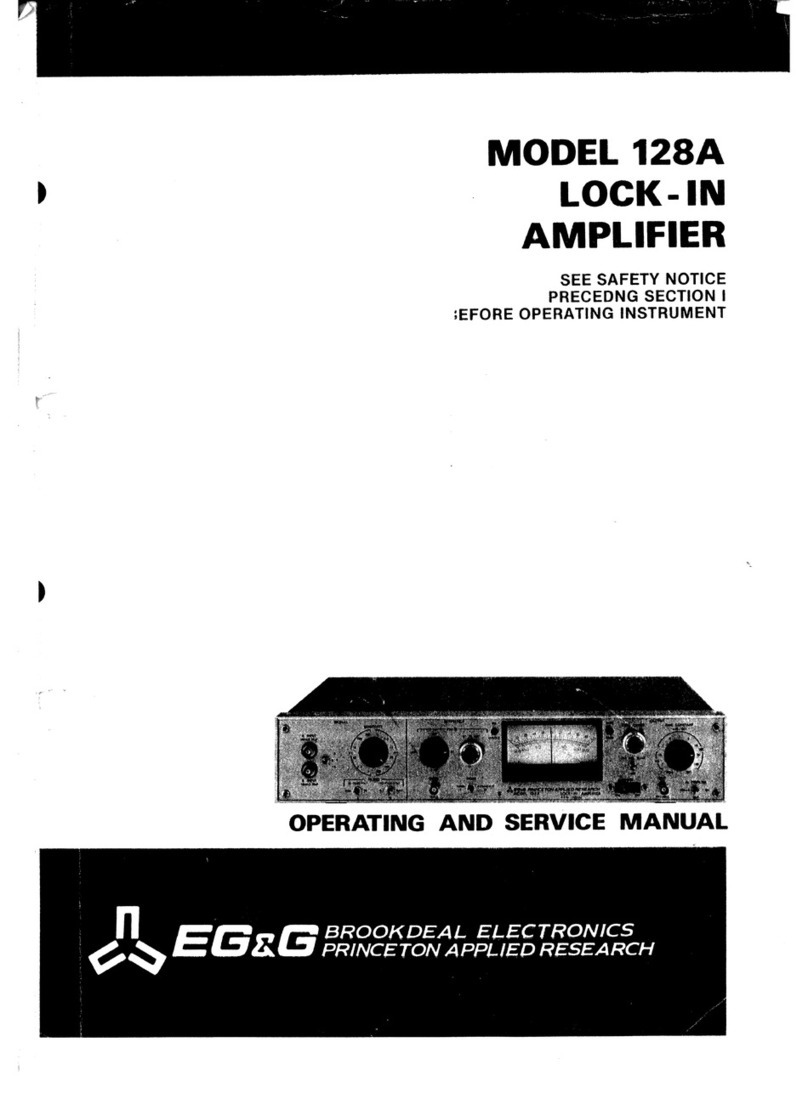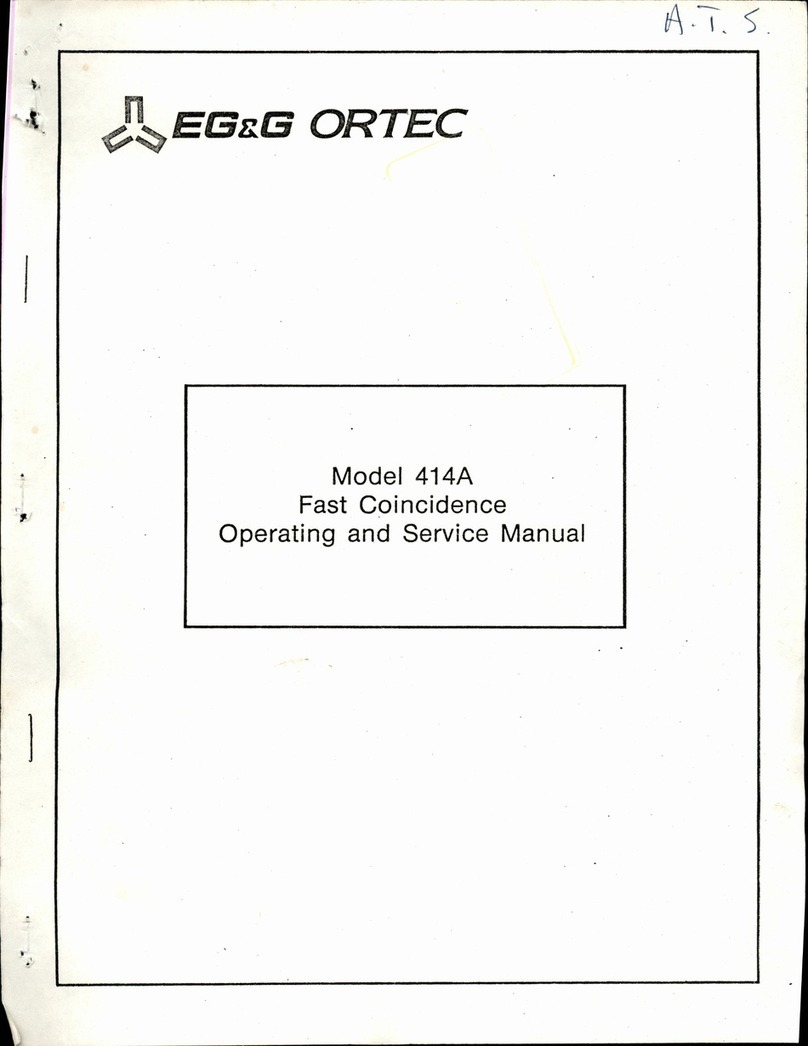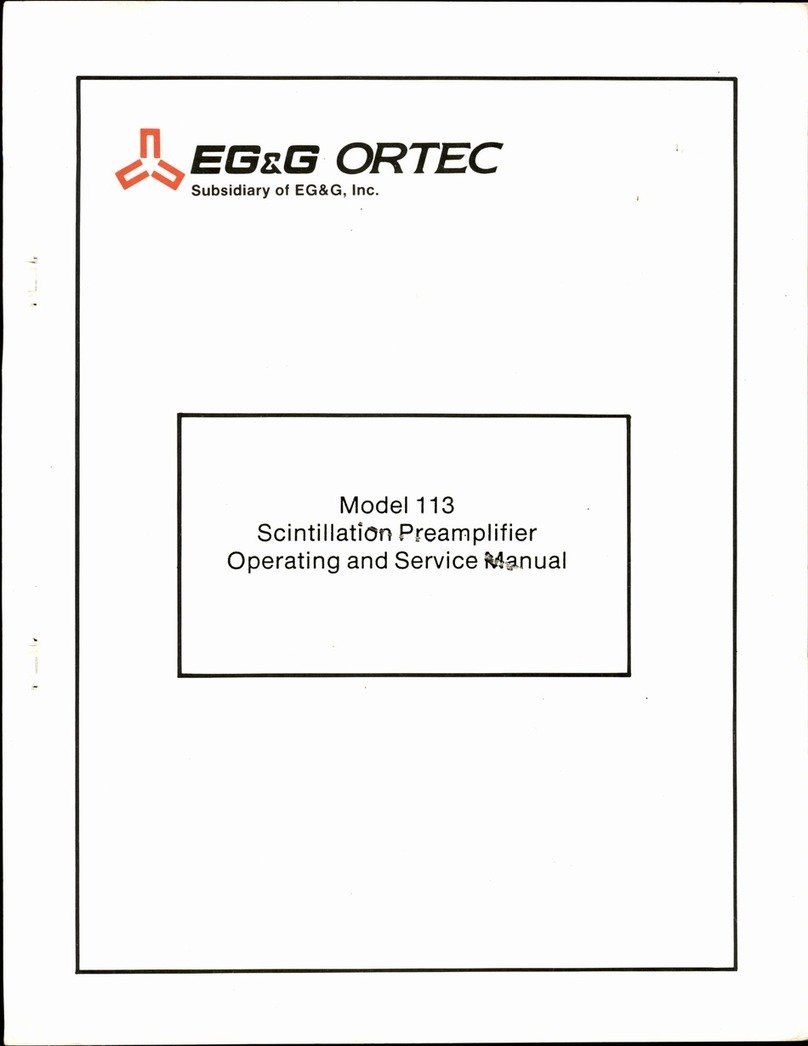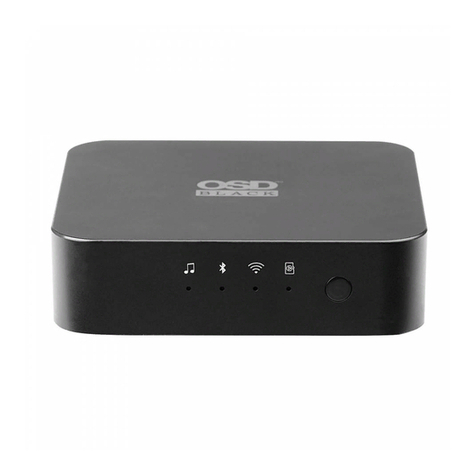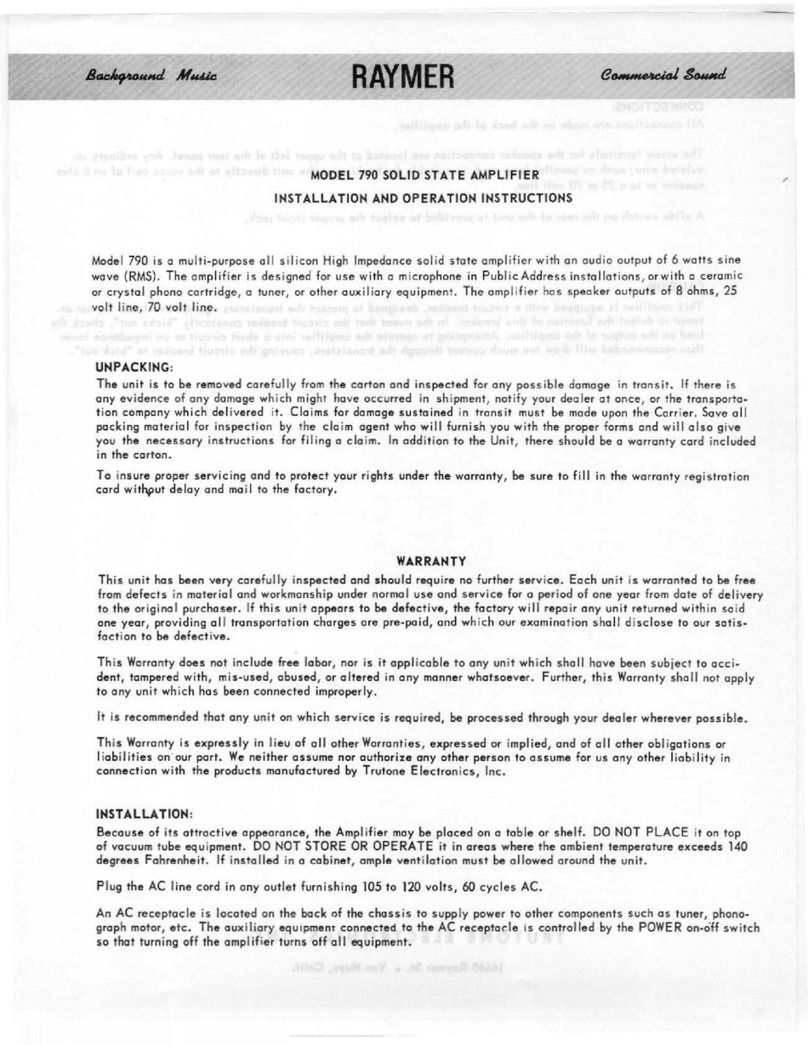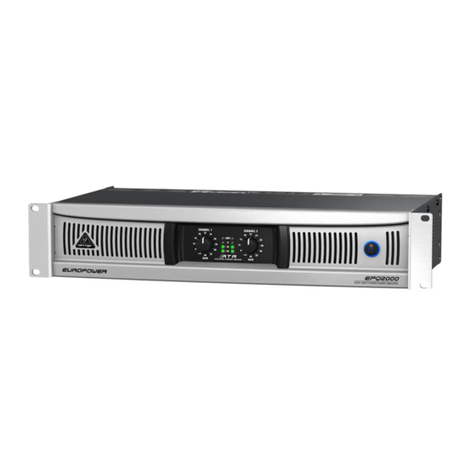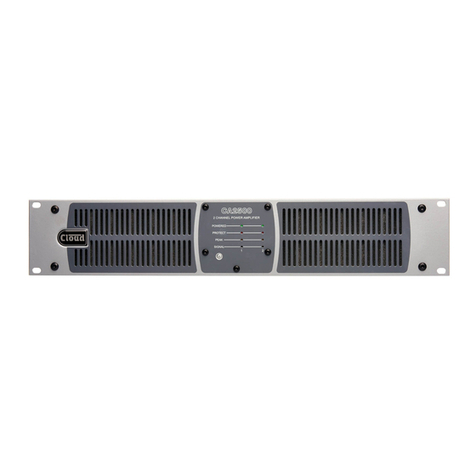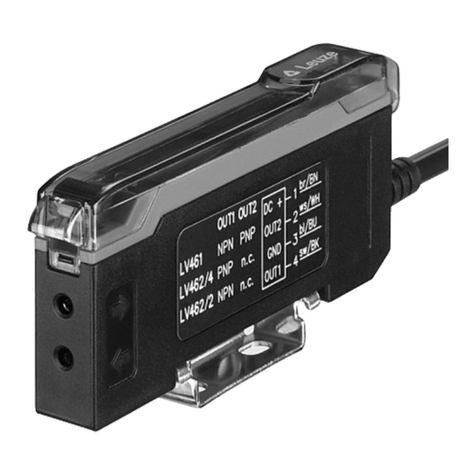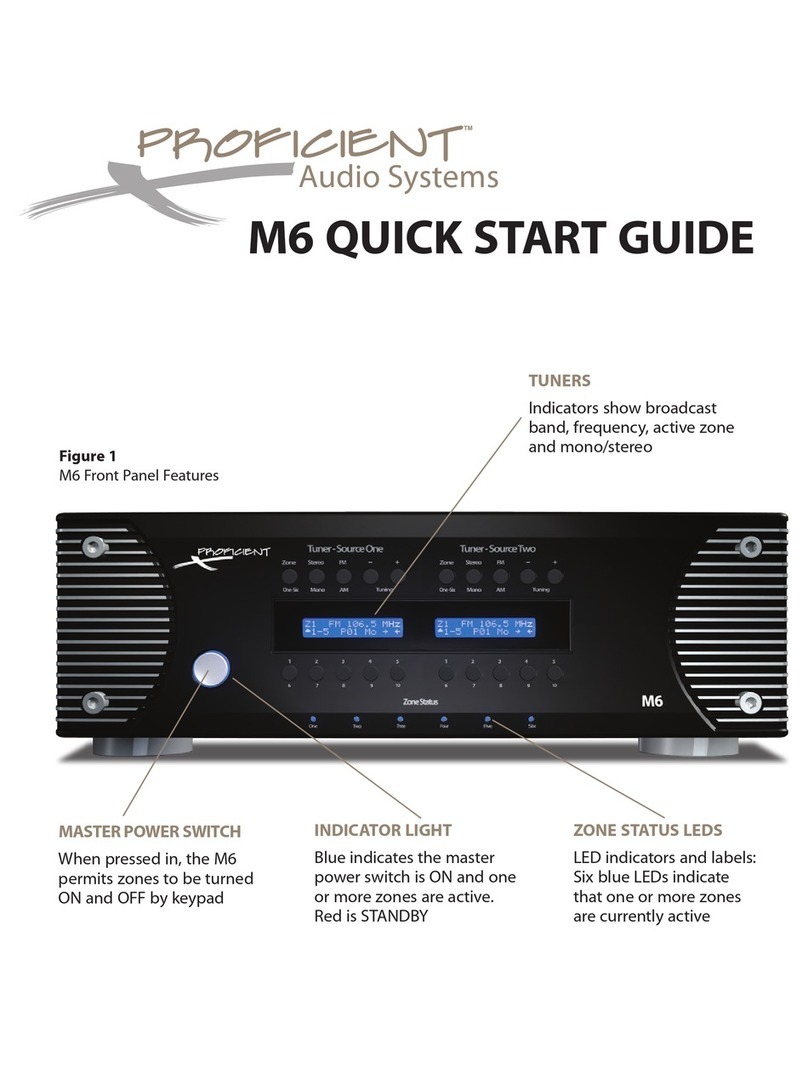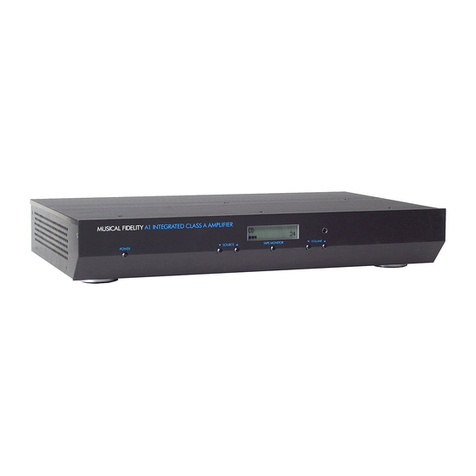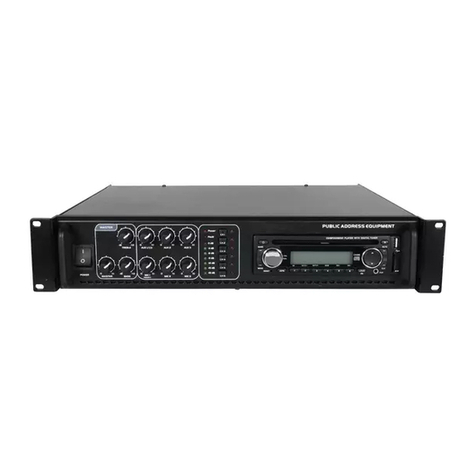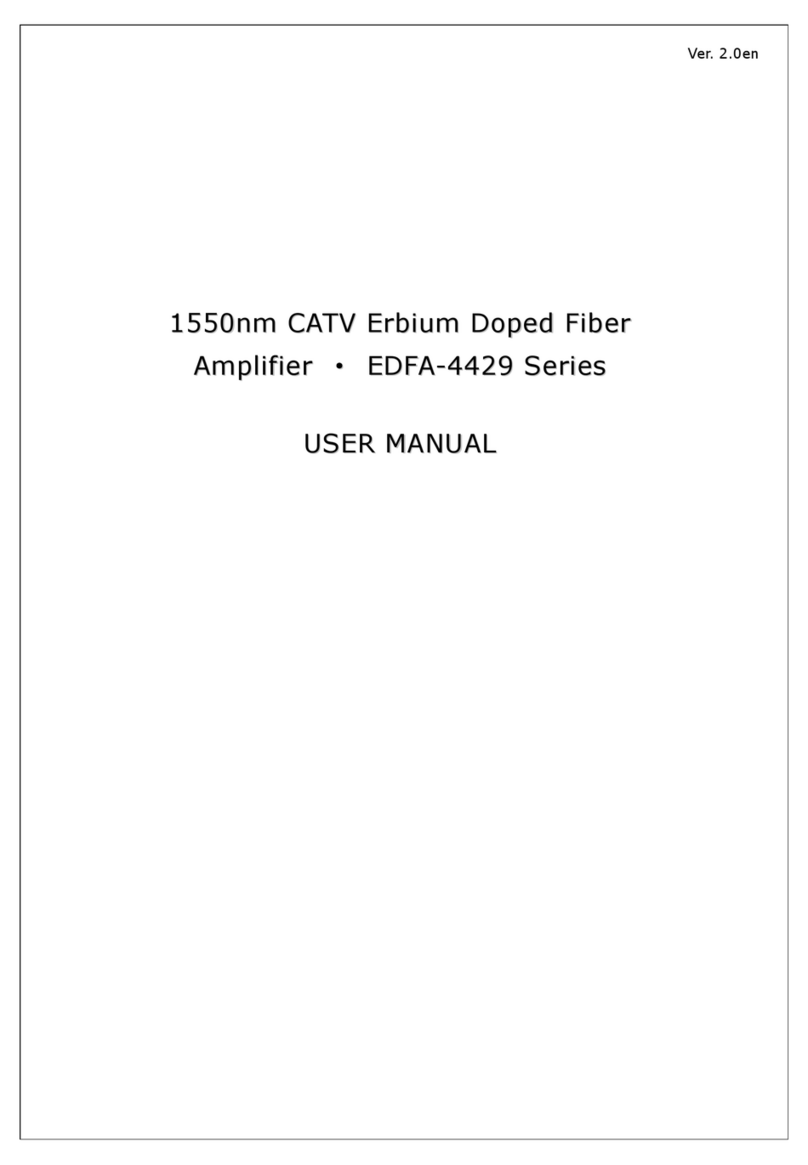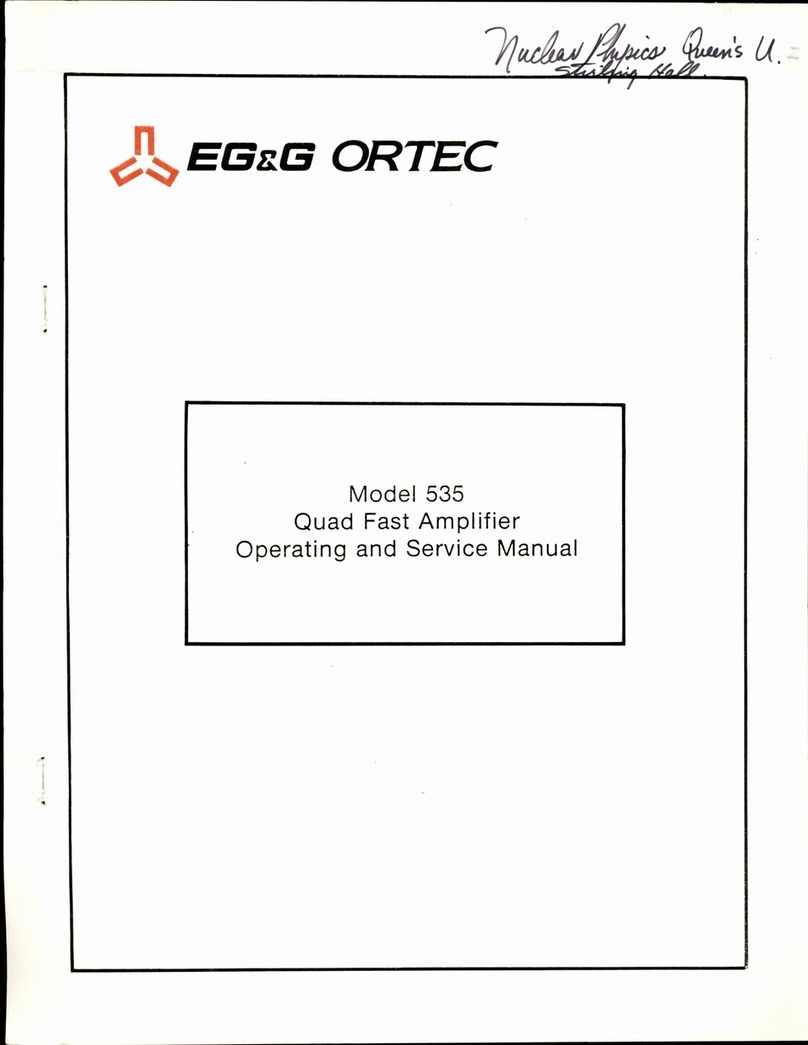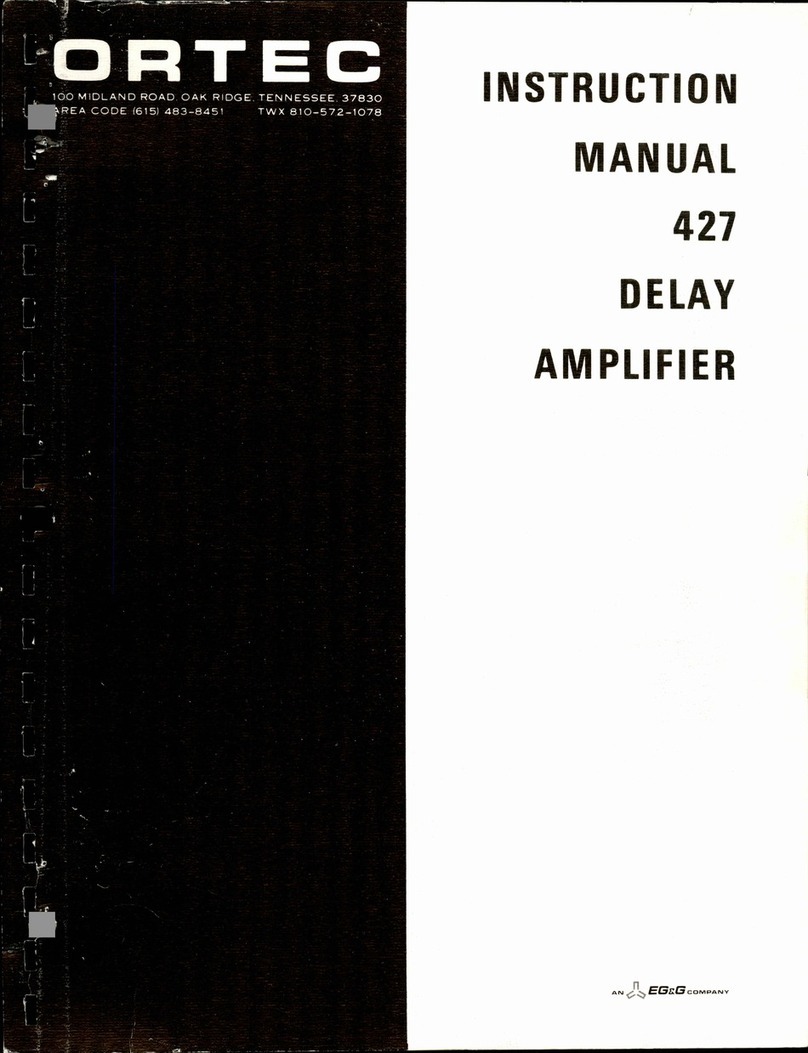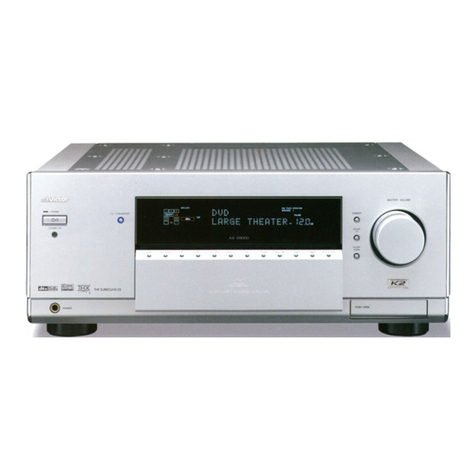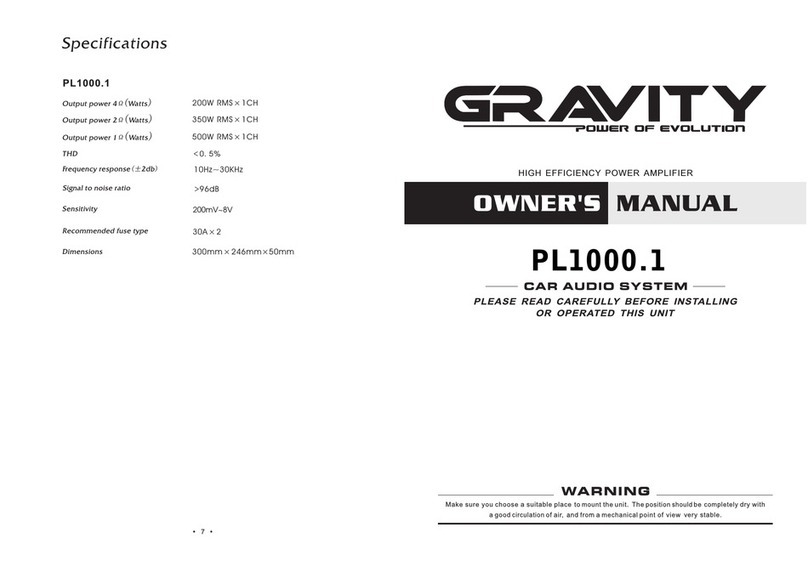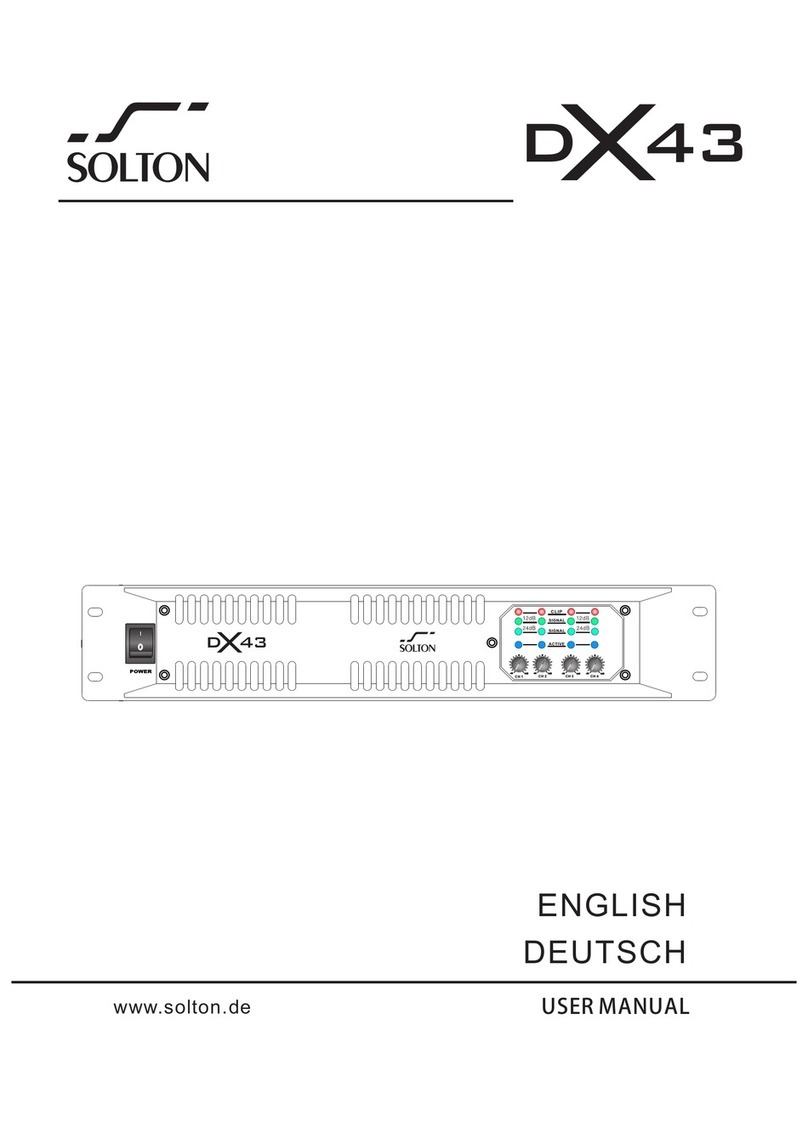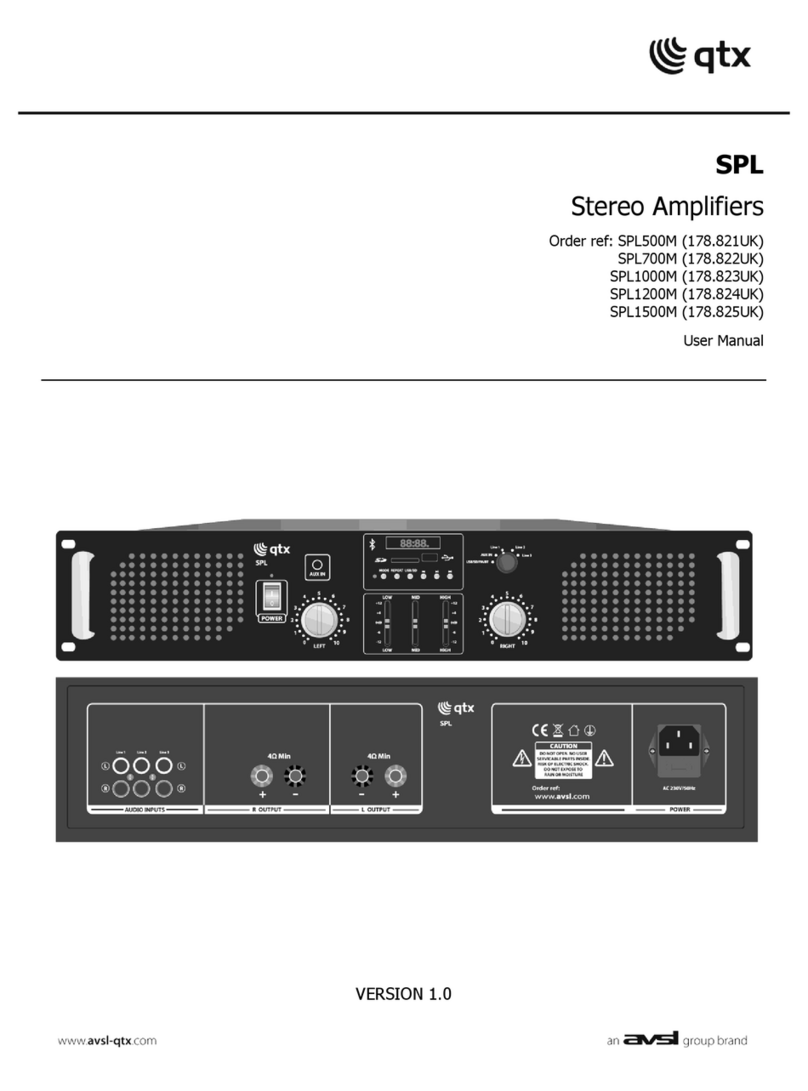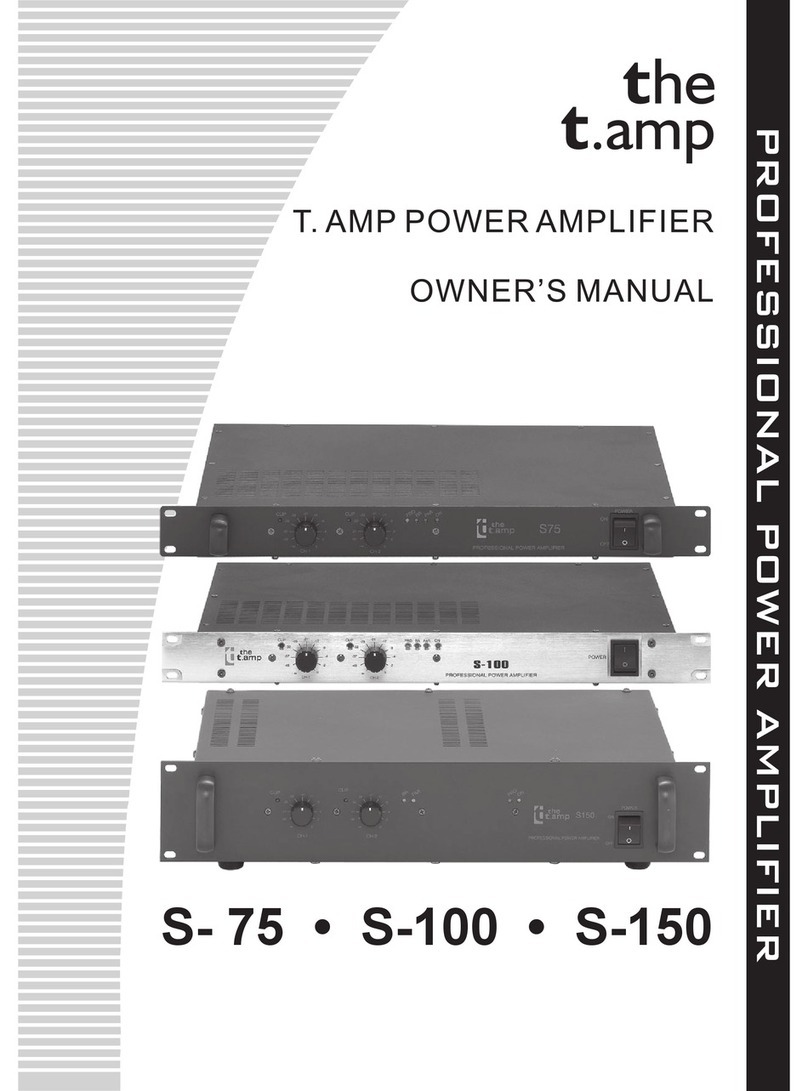
Refer to the Block Diagram and Schematics at the end of this manual.
5.1
5.2
5.3
Beselins Restorer
The input signals to the 444 will pees either through or erwnd the Beeoline Restorer circuit, 88 selected
by front panel switch Sl. When the twitch is set et DC Couple, the circuit is bypassed. If be&in* ‘.
restoration is desired, the switch can be set et either Low or High, according to the relative count rete of
the input signals. When Sl Is set at Low, the wine is restored by e constant current of lC@&, plovid.
ing e restoration ra” of approximately lOmV/#sec. When Sl is set et High, the current is 3mA, for e
WStOratiOn rateof about 3oOmV/#ee~. These voltege rcatoretion ret= ten be varied by changing the velue
Of C2. The baseline restoration circuit includm Ql, CU. (13, Q4, and Dl.
Buffer Amplifier
The restoration circuit is followed by e non-invwting buffer amplifier, including 05 through Q8 end
Q53. with e gain of approximetely one. The gein of this step is given by the ratio R21 + R15 Thee04
R15 .
is dc-coupled from this etege to the output, so en adjustment is provided in ee& etege to set its dc level
et LWO. Potentiometer R13 should be adjusted for a zero volt level et the output of the buffer amplifier,
meesured at TPl. The Buffer Amplifier drivef the Input Geteend the Discriminator.
Input Gate
Transistor 09 is the shunt type Input Gate. When the front panel Mode witch is sat et Normal, Q9
retr#eins off until the peek of the input pulse, when it saturates and clamps the gate of 010 to ground.
09 continues in Pturetion until the input signal fells below the Discriminator level end the 444 Output
pul~a has been completed, and the Input Gate is closed through this time. This preuenr, the 444 from
accepting a second pulse until it has completed processing the first pulse, end elimineter positive on
positive pile-up. Details we shown in Figures 5-l end 5.2.
When the Mode switch is set et its Gated position, the functional mode must be selected by the rear
panel CoinclAnti switch, and the Input Gate provides the edded function together with its pile-up
rejection function. When the Coincidence mode is selected, 09 will be normally turned on and raturated.
clamping the gate of 010 to ground. In order to open the gate. e logic pulse mun be furnished through
the Gate input BNC to turn 09 off. The input logic pulse is reshaped for en adjusted Gate Pried by
IC5, 1331, and Q32, and applied to the input gets drive circuit, Q24, 025, and 027, to open Bate 09
for the duration of the Gate Period. The Gate Period must overlsp the peek of the linear input signel if
the input signal is to be accepted.
When the AntiCoincidence mode is selected, the control of Q9 is the inverse of the above discussion.
09 will normally be off, the gate will be open except when it is closad bye Gateinput logic pulse, end
lineer input signals will normally~ be eccepted. In order to obtain proper Anti-Coincidence control. the
Gate Period which is triggered by the Gate input pulse must totally overlep the timeduring which the
linear input pulse exceeds the discrimination level. If the range of the Gate Period needs to be increesed.
change the value of C34 to e larger capacity for the longer control period.
5.4
5.5
Busy Output
The Busy Output is e monitor of the internally created deed time in the 444. This signal begins at the
peek of the linear input and continues to the completion of the 444 output pulse, ending then only if all
of the conditions which will enable the Input Gate have been fulfilled. Refer to the timing diagems of
Figures 5-l and 52, and to Section 4.8.
Discriminator
.
5-l
5. CIRCUIT DESCRIPTION
The Disqiminetor permits the 444 to reject all input pulses which fail to rise above the Selected
disriminetion level, such 86 noise pulses. The discriminator level can be adjusted from +O.l throu&
+lV with front panel control R125. When the discriminator level is exceeded by e linear input signal end
the input Gate is open, e signal is sent to the Stretch Amplifier to stretch the input pulse.
























